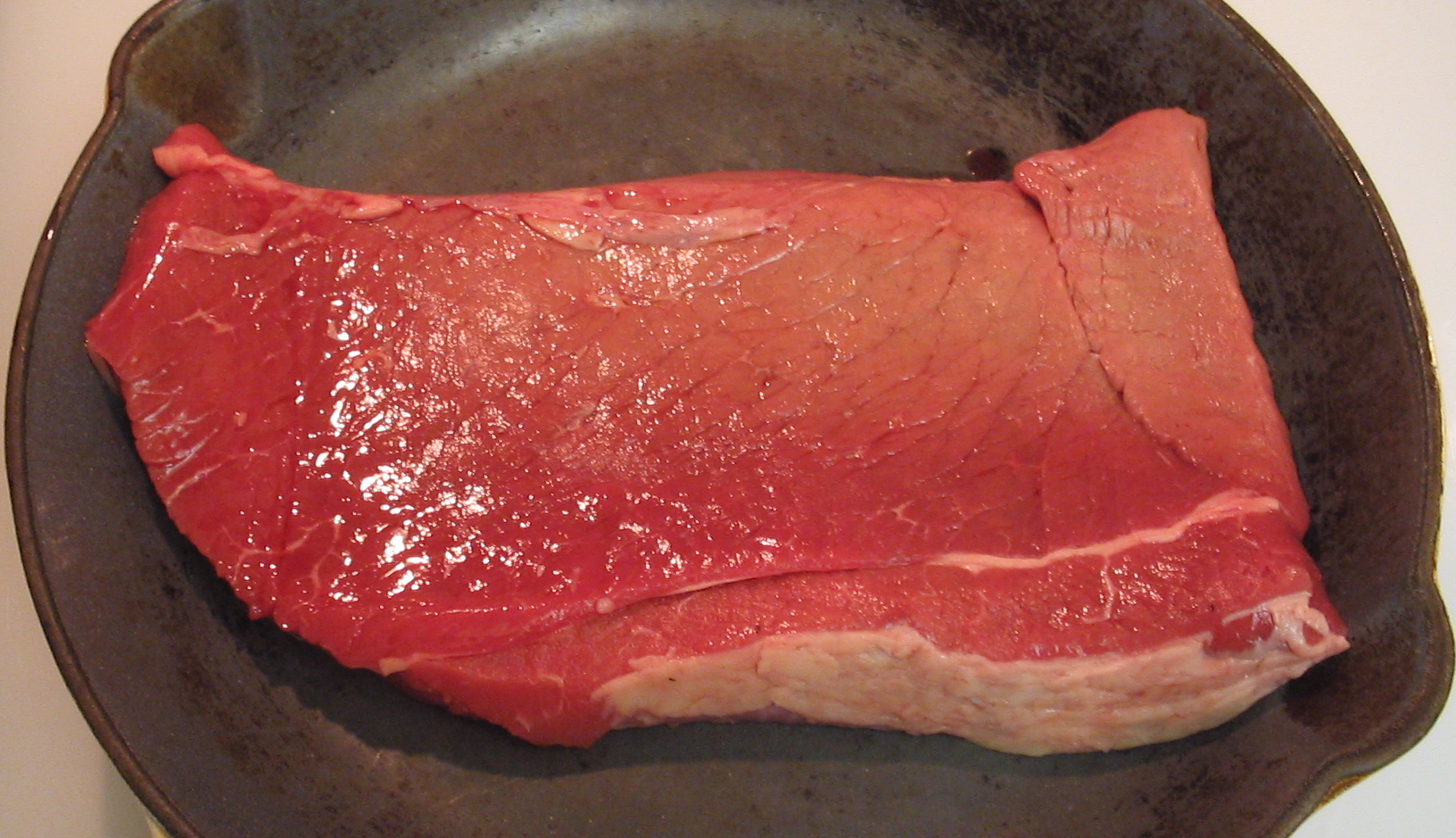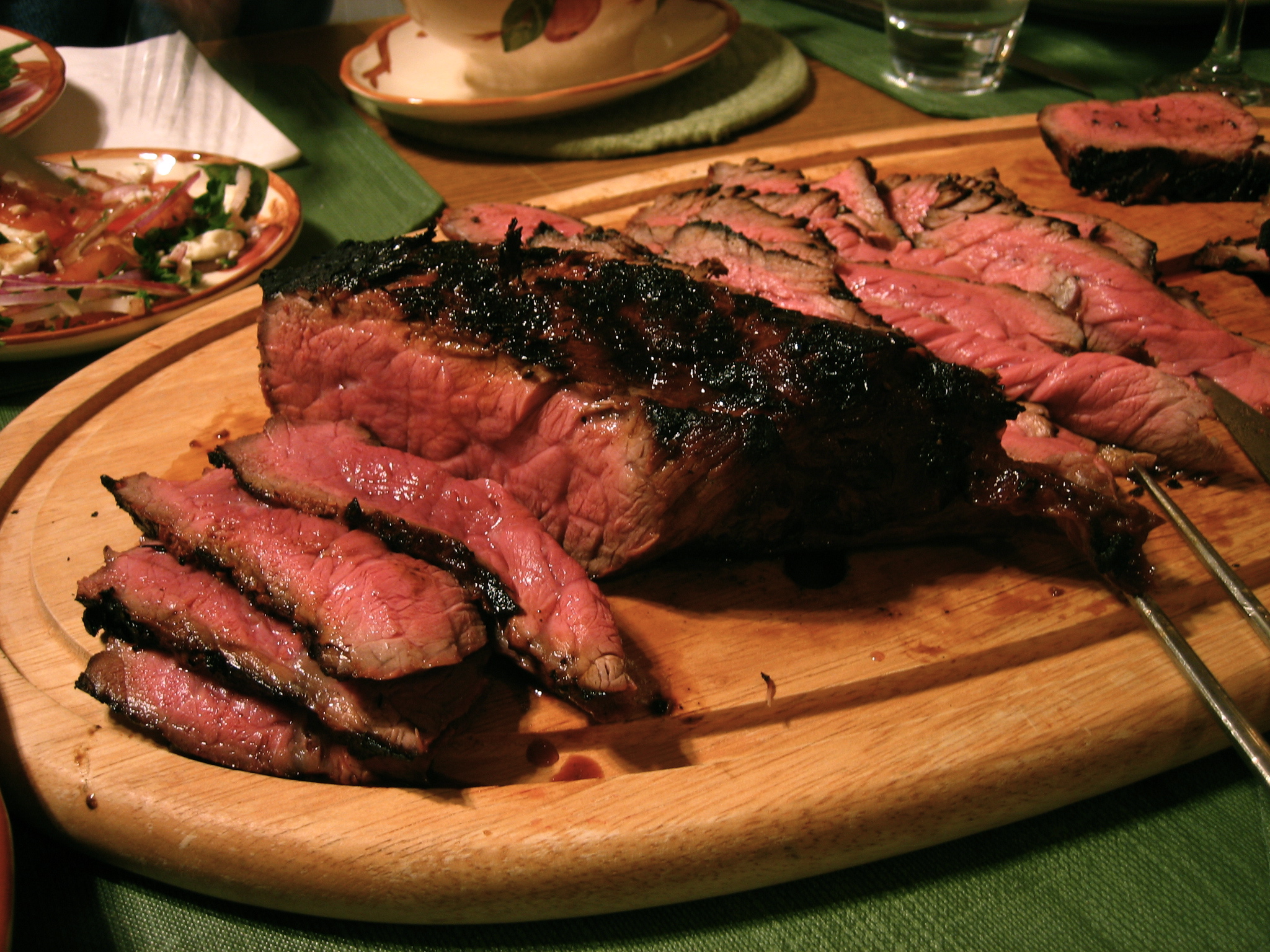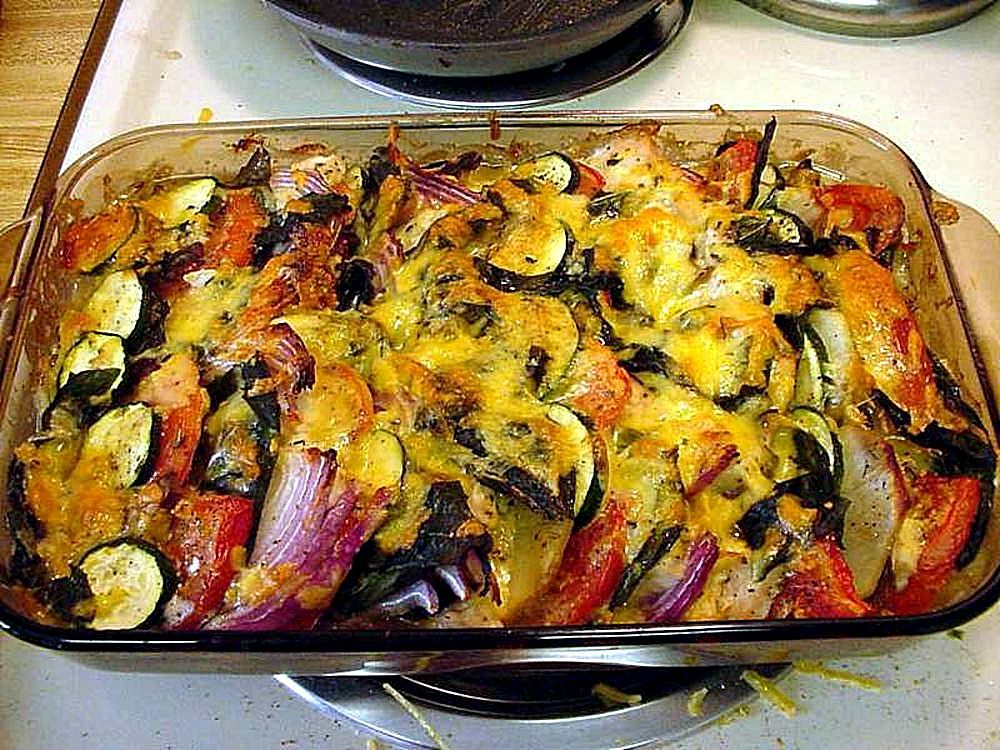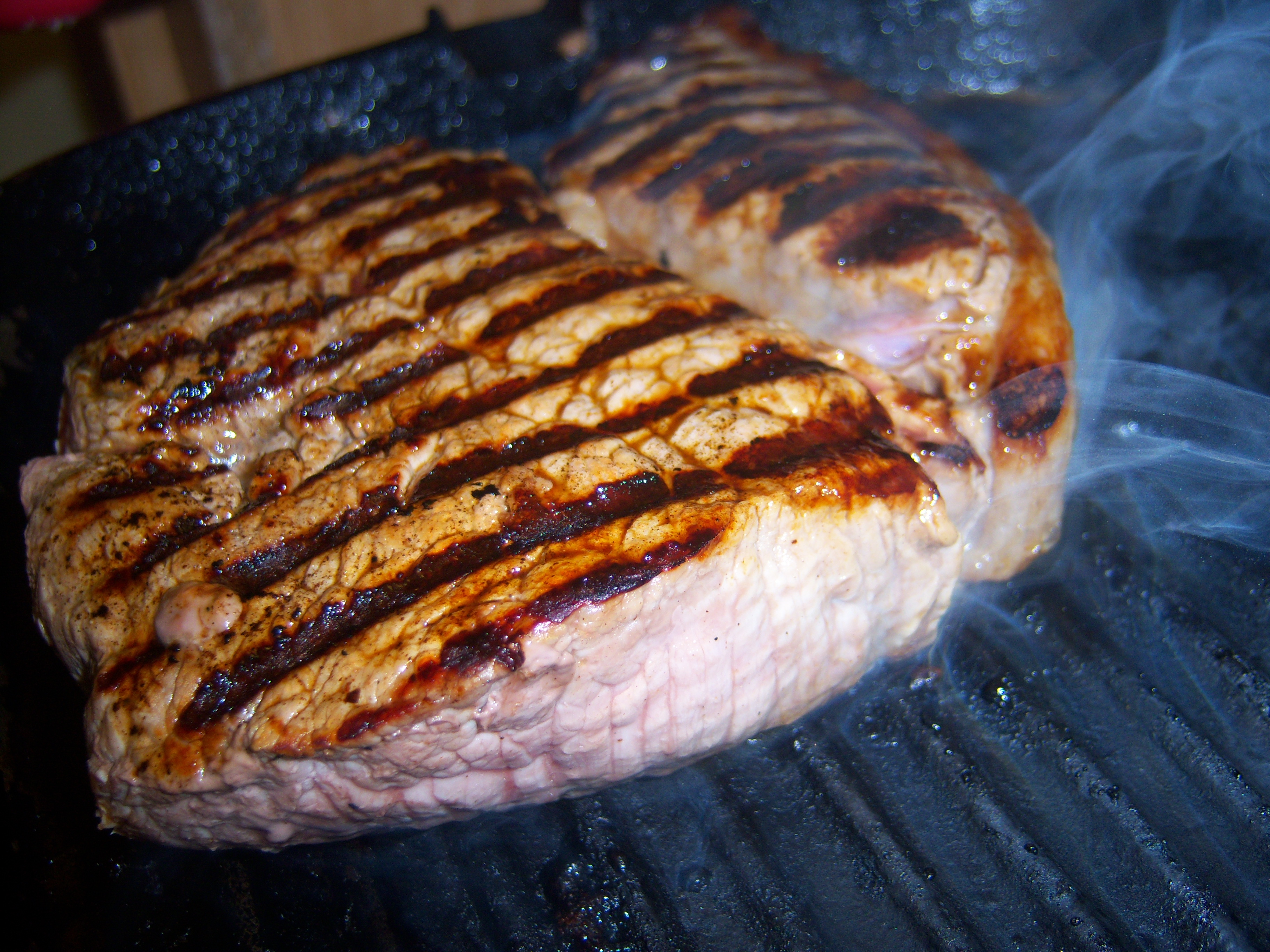|
Popeseye Steak
Popeseye steak is thinly sliced rump steak, originating in Scotland. Etymology The etymology of the term "popeseye steak" is twofold: * It is possibly from ''pope's eye'', "the gland surrounded with fat in the middle of the thigh of an ox or a sheep". * The base steak from which the popeseye steak is cut is the Rump steak or Round Steak, which consists of the "eye round, bottom round, and top round still connected together". Butchery One first begins with a cut of rump steak. Then, thinly slice the rump steak across the widest face of the rump steak (shown as the top of the steak in the illustration). Slice width varies; one Scotch Beef butcher sells slices that "typically weigh around 6oz" each. Characteristics Popeseye steak is very tender, and, due to its relative thinness compared to other steaks, cooks quickly, particularly if used as a pan frying steak. Cooking of this cut should stop as soon as it is brown on each side. Food preparation These steaks can be enjoy ... [...More Info...] [...Related Items...] OR: [Wikipedia] [Google] [Baidu] |
Cut Of Beef
During butchering, beef is first divided into primal cuts, pieces of meat initially separated from the carcass. These are basic sections from which steaks and other subdivisions are cut. Since the animal's legs and neck muscles do the most work, they are the toughest; the meat becomes more tender as distance from hoof and horn increases. Different countries and cuisines have different cuts and names, and sometimes use the same name for a different cut; e.g., the cut described as "brisket" in the US is from a significantly different part of the carcass than British "brisket". "Cut" often refers narrowly to skeletal muscle (sometimes attached to bones), but can also include other edible flesh, such as offal (organ meat) or bones without significant muscles attached. American The following is a list of the American primal cuts, and cuts derived from them. Beef carcasses are split along the axis of symmetry into "halves", then across into front and back "quarters" (forequarters a ... [...More Info...] [...Related Items...] OR: [Wikipedia] [Google] [Baidu] |
Steak
A steak is a thick cut of meat generally sliced across the muscle fibers, sometimes including a bone. It is normally grilled or fried. Steak can be diced, cooked in sauce, such as in steak and kidney pie, or minced and formed into patties, such as hamburgers. Steaks are cut from animals including cattle, bison, camel, goat, horse, kangaroo, sheep, ostrich, pigs, reindeer, turkey, deer, and zebu, as well as various types of fish, especially salmon and large fish such as swordfish, shark, and marlin. For some meats, such as pork, lamb and mutton, chevon, and veal, these cuts are often referred to as chops. Some cured meat, such as gammon, is commonly served as steak. Grilled portobello mushroom may be called mushroom steak, and similarly for other vegetarian dishes. Imitation steak is a food product that is formed into a steak shape from various pieces of meat. Grilled fruits such as watermelon have been used as vegetarian steak alternatives. Exceptions, in which the me ... [...More Info...] [...Related Items...] OR: [Wikipedia] [Google] [Baidu] |
List Of Steak Dishes
This is a list of steak dishes. Steak is generally a cut of beef sliced perpendicular to the muscle fibers, or of fish cut perpendicular to the spine. Meat steaks are usually grilled, pan-fried, or broiled, while fish steaks may also be baked. Meat cooked in sauce, such as steak and kidney pie, or minced meat formed into a steak shape, such as Salisbury steak and hamburger steak may also be referred to as steak. Beef Beefsteak is a flat cut of beef, usually cut perpendicular to the muscle fibers. Beefsteaks are usually grilled, pan-fried, or broiled. The more tender cuts from the loin and rib are cooked quickly, using dry heat, and served whole. Less tender cuts from the chuck or round are cooked with moist heat or are mechanically tenderized (e.g. cube steak). * – some asado dishes use beef steak * * * * * * * * * * * * * * – term originally referred to the cut of beef used in the dish which is known as skirt steak. * * * * * * * * * * * * ... [...More Info...] [...Related Items...] OR: [Wikipedia] [Google] [Baidu] |
Cut Of Beef
During butchering, beef is first divided into primal cuts, pieces of meat initially separated from the carcass. These are basic sections from which steaks and other subdivisions are cut. Since the animal's legs and neck muscles do the most work, they are the toughest; the meat becomes more tender as distance from hoof and horn increases. Different countries and cuisines have different cuts and names, and sometimes use the same name for a different cut; e.g., the cut described as "brisket" in the US is from a significantly different part of the carcass than British "brisket". "Cut" often refers narrowly to skeletal muscle (sometimes attached to bones), but can also include other edible flesh, such as offal (organ meat) or bones without significant muscles attached. American The following is a list of the American primal cuts, and cuts derived from them. Beef carcasses are split along the axis of symmetry into "halves", then across into front and back "quarters" (forequarters a ... [...More Info...] [...Related Items...] OR: [Wikipedia] [Google] [Baidu] |
Meat Pie
A meat pie is a pie with a filling of meat and often with other savory ingredients. They are found in cuisines worldwide. Meat pies are usually baked, fried, or deep fried to brown them and develop the flavour through the Maillard reaction. Many varieties have a flaky crust. History The origins of the meat pie have been traced back to the Neolithic period, around 9500 BC. Versions of what are now known as pies were featured on ancient Egyptian tomb walls, and in ancient Greek and Roman texts. The ancient Egyptians' diet featured basic pies made from oat, wheat, rye, and barley, filled with honey and baked over hot coals. The Greeks used a flour-water paste resembling pie pastry, and filled it with meat. These pies were usually fried or cooked under coals. The Romans adopted the Greek creations, using a variety of meats, oysters, mussels, lampreys, and fish as filling and a mixture of flour, oil, and water for the crust. This 'pastry' cover was not meant to be eaten and was dis ... [...More Info...] [...Related Items...] OR: [Wikipedia] [Google] [Baidu] |
Umami
Umami ( from ja, 旨味 ), or savoriness, is one of the five basic tastes. It has been described as savory and is characteristic of broths and cooked meats. People taste umami through taste receptors that typically respond to glutamates and nucleotides, which are widely present in meat broths and fermented products. Glutamates are commonly added to some foods in the form of monosodium glutamate (MSG), and nucleotides are commonly added in the form of disodium guanylate, inosine monophosphate (IMP) or guanosine monophosphate (GMP). Since umami has its own receptors rather than arising out of a combination of the traditionally recognized taste receptors, scientists now consider umami to be a distinct taste. Foods that have a strong umami flavor include meats, shellfish, fish (including fish sauce and preserved fish such as maldive fish, '' Katsuobushi'', sardines, and anchovies), tomatoes, mushrooms, hydrolyzed vegetable protein, meat extract, yeast extract, cheeses, and soy s ... [...More Info...] [...Related Items...] OR: [Wikipedia] [Google] [Baidu] |
Casserole
A casserole ( French: diminutive of , from Provençal 'pan') is a normally large deep pan or bowl a casserole is anything in a casserole pan. Hot or cold History Baked dishes have existed for thousands of years. Early casserole recipes consisted of rice that was pounded, pressed, and filled with a savoury mixture of meats such as chicken or sweetbread. Some time around the 1870s this sense of casserole seems to have taken its current sense. Cooking in earthenware containers has always been common in most cultures, but the idea of casserole cooking as a one-dish meal became popular in the United States in the twentieth century, especially in the 1950s when new forms of lightweight metal and glass cookware appeared on the market. By the 1970s casseroles took on a less-than-sophisticated image. American-style casserole In the United States, a casserole or hot dish is typically a baked food with three main components: pieces of meat (such as chicken or ground meat) or fish ... [...More Info...] [...Related Items...] OR: [Wikipedia] [Google] [Baidu] |
Fondue
Fondue (, , ) is a Swiss melted cheese dish served in a communal pot ( ''caquelon'' or fondue pot) over a portable stove () heated with a candle or spirit lamp, and eaten by dipping bread into the cheese using long-stemmed forks. It was promoted as a Swiss national dish by the Swiss Cheese Union (Schweizerische Käseunion) in the 1930s, and was popularized in North America in the 1960s. Since the 1950s, the term "fondue" has been generalized to other dishes in which a food is dipped into a communal pot of liquid kept hot in a fondue pot: chocolate fondue, ''fondue au chocolat'', in which pieces of fruit or pastry are dipped into a melted chocolate mixture, and ''fondue bourguignonne'', in which pieces of meat are cooked in hot oil or broth. Etymology The word ''fondue'' is the feminine passive past participle of the French verb 'to melt' used as a noun. It is first attested in French in 1735, in Vincent La Chapelle's ''Cuisinier moderne'',Vincent la Chapelle, ''Le cuisinier ... [...More Info...] [...Related Items...] OR: [Wikipedia] [Google] [Baidu] |
Grilling
Grilling is a form of cooking that involves dry heat applied to the surface of food, commonly from above, below or from the side. Grilling usually involves a significant amount of direct, radiant heat, and tends to be used for cooking meat and vegetables quickly. Food to be grilled is cooked on a grill (an open wire grid such as a gridiron with a heat source above or below), using a cast iron/frying pan, or a grill pan (similar to a frying pan, but with raised ridges to mimic the wires of an open grill). Heat transfer to the food when using a grill is primarily through thermal radiation. Heat transfer when using a grill pan or griddle is by direct conduction. In the United States, when the heat source for grilling comes from above, grilling is called broiling. In this case, the pan that holds the food is called a broiler pan, and heat transfer is through thermal radiation. Direct heat grilling can expose food to temperatures often in excess of . Grilled meat acquires a dis ... [...More Info...] [...Related Items...] OR: [Wikipedia] [Google] [Baidu] |
Braising
Braising (from the French word ''braiser'') is a combination-cooking method that uses both wet and dry heats: typically, the food is first browned at a high temperature, then simmered in a covered pot in cooking liquid (such as wine, broth, coconut milk or beer). It is similar to stewing, but braising is done with less liquid and usually used for larger cuts of meat. Braising of meat is often referred to as pot roasting, though some authors make a distinction between the two methods, based on whether additional liquid is added. Osso buco and coq au vin are well known braised meat dishes, and the technique can also be used to prepare fish, tempeh, tofu or fruits and vegetables. Method Braising relies on heat, time, and moisture to break down the tough connective tissue (collagen) that binds together the muscle fibers in meat, making it an ideal way to cook tougher, more affordable cuts. Many classic braised dishes (e.g., coq au vin) are highly evolved methods of cooking tough and ... [...More Info...] [...Related Items...] OR: [Wikipedia] [Google] [Baidu] |
Pan Frying
Pan frying or pan-frying is a form of frying food characterized by the use of minimal cooking oil or fat (compared to shallow frying or deep frying), typically using just enough to lubricate the pan. In the case of a greasy food such as bacon, no oil or fats may need to be added. As a form of frying, the technique relies on oil or fat as the heat transfer medium, and on correct temperature and time to not overcook or burn the food. Pan frying can serve to retain the moisture in foods such as meat and seafood. The food is typically flipped at least once to ensure that both sides are cooked properly. Specifics Pan frying takes place at lower heat than sautéing. This is because the food to be pan fried – such as chicken breasts, steak, pork chops, or fish fillets – is ''not'' cut into small pieces before cooking. It requires a lower heat so that the exterior of the food does not overcook by the time the interior reaches the proper temperature, and to keep foods in a moister s ... [...More Info...] [...Related Items...] OR: [Wikipedia] [Google] [Baidu] |
Rump Steak
Rump steak is a cut of beef. The rump is the division between the leg and the chine cut right through the aitch bone. It may refer to: * A steak from the top half of an American-cut round steak primal * A British- or Australian-cut from the rump primal, largely equivalent to the American ''sirloin'' American and British equivalencies The British and Commonwealth English "rump steak" is commonly called "sirloin" in American English. On the other hand, British "sirloin" is called short loin or "porterhouse" by Americans. French usage Rump steak corresponds roughly to the French cut ''culotte'' (literally 'britches'). The ''pointe de culotte'', the rump cap is highly recommended for braising as ''bœuf à la mode''. In the 20th century the English term ''rump steak'' was adopted, although with modified orthography ''romsteak'' or ''romsteck''. The spelling ''rumsteak'' is also attested.''Le Petit Larousse'', Larouss, Paris, 1994 See also * Steak A steak is a t ... [...More Info...] [...Related Items...] OR: [Wikipedia] [Google] [Baidu] |








